"I am very aware that so little has happened to the electric guitar from the time that it was conceived to now": A classic interview with innovator Les Paul
Les Paul was born 109 years ago, in 2009 the guitar icon looked back in one of his last-ever interviews – "Leo wanted me to be partners with him, for it to be the Fender guitar – the Les Paul Fender"
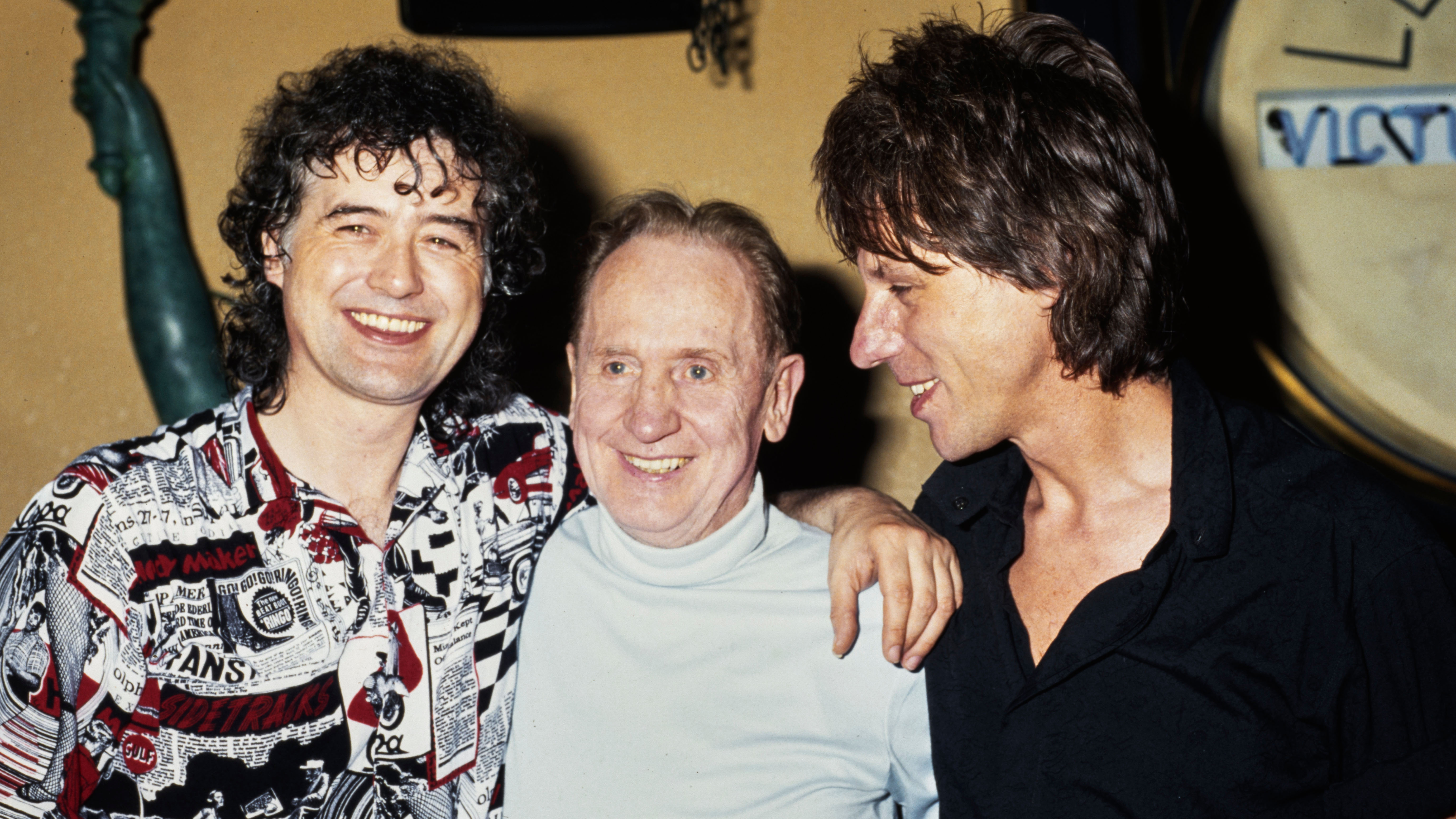
Back in 2009, Guitarist magazine published a huge tribute feature to Les Paul, who died on 12 August that year. Spanning his early life, musical and technical achievements, it explored the legacy left by The Wizard Of Waukesha.
A little under six months before his death, then-Guitarist editor Mick Taylor was lucky enough to speak with Les from his home in New York. Some of the information was used in the Guitarist feature, but for your reading pleasure, here is the full transcript.
Les was 93 years old when the interview took place. While his speech had slowed somewhat, his sense of enthusiasm was absolutely unabated…
Les, it's a great pleasure to talk to you, thank you for taking the time today. Tell us, are you still playing [NYC music club] The Iridium every Monday night?
"Still! Every Monday."
What are your favourite songs to play?
"Well we have a lot of guests that come up on the stage - anyone could walk up on that stage. It can be Paul McCartney, it could be Keith Richards… you could go on naming them for hours. Jeff Beck… who knows? Over here you may have an astronaut that comes up and we won't play any songs at all, we'll be talking.
Get the MusicRadar Newsletter
Want all the hottest music and gear news, reviews, deals, features and more, direct to your inbox? Sign up here.
"So it's a wide variety. Interesting this question that you ask, I was told here a couple of weeks ago that some rock guitar player got up on the stage and the rest of the band got up and walked off – they won't even play with one another. But I welcome an eight-year-old kid to come up and see what he's got – whether I can encourage him to play, just sort of run a curve on him y'know.
"Our music is generally the music I would play way back when I was in the record business. So I'll play World Waiting For The Sunrise and How High The Moon, maybe Over The Rainbow, some standards. But it depends upon the artist that comes up - if people like a certain kind of music, I will focus the show that way. Whoever walks up on to the stage is the star - he is the picture, we are the frame. The frame is there to make the star look better – let's make this fellow the best he's ever going to be."
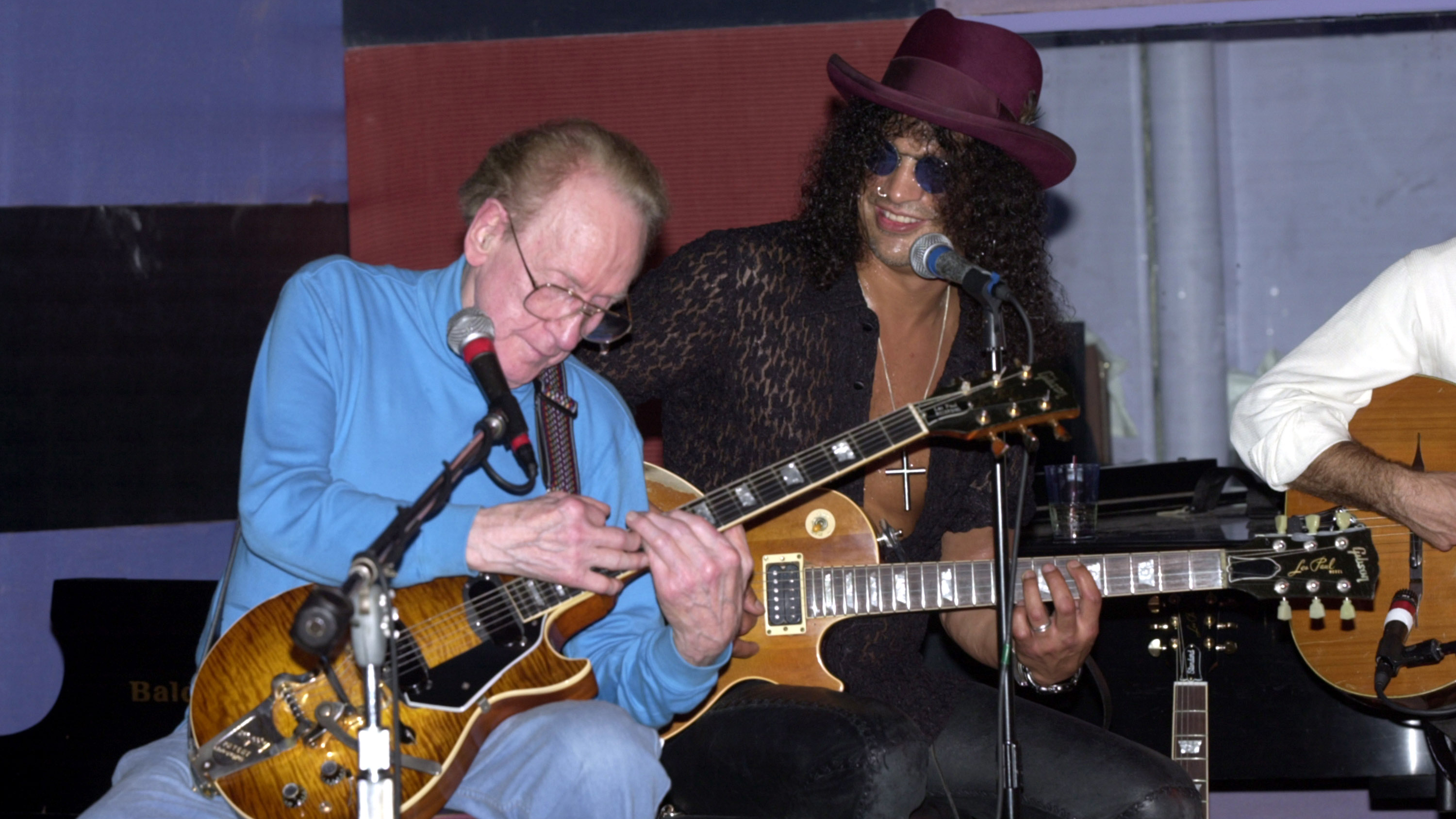
You mentioned the example of a young kid coming up to play, and you'd try to encourage him. What can you remember about the first time you started to play, and how you were encouraged?
I remember walking out on stage and peeling a banana – I threw the banana away and ate the peeling!
"To me it was like a disaster to play on a radio station, then go over to a large theatre and walk out there and perform! I'd never done either prior to that. To walk out on the stage the first time, you're really going fishin'. I got through the radio program fine, but on the stage I didn't know what to do – I didn't have an act. I was so frightened. I remember they had some food to eat, and I remember walking out on stage and peeling a banana – I threw the banana away and ate the peeling! That was my first memory of being on the stage."
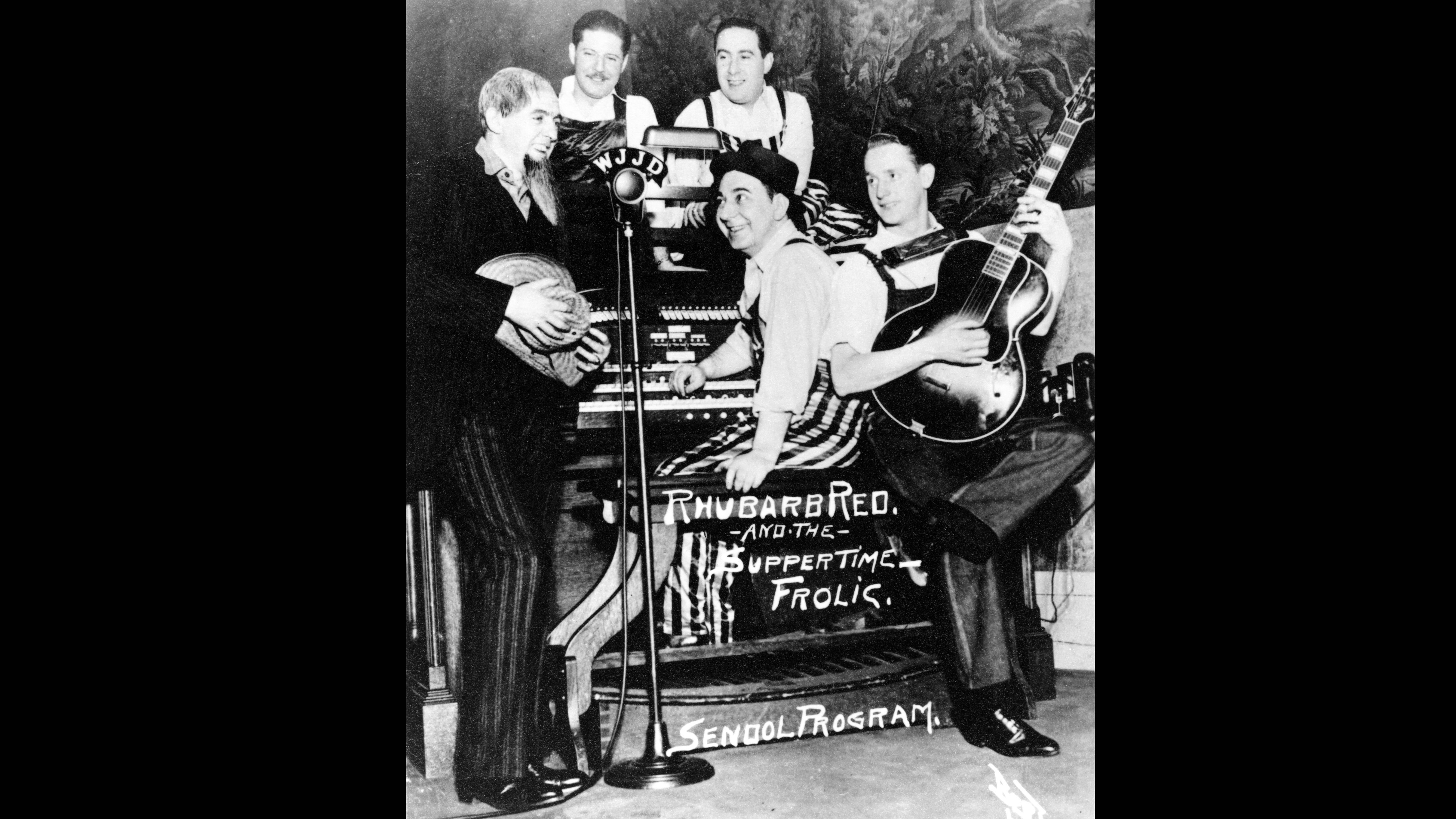
Were you Rhubarb Red at that point? [The young Lester Polsfuss used the stage name in deference to his contemporary Pie Plant Pete]
"I was Red Hot Red. We had to start somewhere. And you learn immediately by watching the professionals on the stage. I was nine years old. You learn fast from others how to be an entertainer as well as a musician; you don't necessarily have to get out there and just play, you can be an entertainer too. I followed that through my whole life. I would have been with the Bing Crosbys the Jack Bennys, the Bob Holcuss, The Andrews Sisters, Fred Waring, Paul Whiteman - all the people I learned from. It never ends where you learn.
It didn't take me long to work out that I needed something more, and that was the guitar
"When I started playing, I was playing just the harmonica. We're back in the prohibition days. Like down a dark alley somewhere, you'd play for an illegal club that was probably right behind a police station, and what I'd do is sing and play the harmonica. It didn't take me long to work out that I needed something more, and that was the guitar. So when you added the guitar, the harmonica and my voice, you would be talking with people mainly in the bar, or in the restaurant, or the people in the pub."
Can you remember the first time you started pulling things apart - where did that interest begin?
"What started me pulling things apart, the first thing was that we had a player piano in the living room, and a Victrola [a gramophone in a cabinet that debuted in 1906] and a radio and a telephone. They were the important things I could use to progress. And what I found is that when I played something, my mother or my brother or someone around there would say, That sounds pretty good. I'd say, Well I don't know because I'm so busy doing it, I'm probably not hearing it the way you're hearing it.
"So what I did was put on my work clothes to start soldering and building things and the next thing I know I'm studying electronics and I'm heading towards making a recording device so that I could hear what my mother or my brother were listening to: I could criticise it or enjoy it and see what they were talking about! It's something that surely wasn't around Waukesha when I was nine years old! There wasn't such a thing as a recording device, so I had to build it.
"I went out to the transmitter room at the radio station that was just about to go on air and I started talking to the engineer and he started to teach me electronics. My father happened to own a garage, and he had lathes and equipment to work with and a lot of parts. It was up to me figure out how to make some kind of device to record on, so it was down at the garage I put together my first recording machine. It was an old automobile and in those days they had side curtains on them; side curtains for windows made from celluloid: the beginning of plastics. In any case you could cut it with a nail and get a sound on the record.
The next thing was to make a pickup which I made out of the telephone receiver
"The turntable was a Cadillac flywheel, and for the belt, I eliminated all the extraneous noises and rumbles that you don't wish to record, well, my drummer, who was studying to be a dentist. And it was on his radio station at his dentist school in Milwaukee - its still there. They used dental belt, which was endless belt and that would have a feed through so I could make lines on record. I had that pretty well covered.
"The next thing was to make a pickup which I made out of the telephone receiver. By taking the parts in the living room in my dad's garage I got it together, played it through my mother's speaker in the radio. They weren't the best quality in the world, but it was the beginning. That got me into that world, which of course at the same time got me into the world of amplifying the guitar."
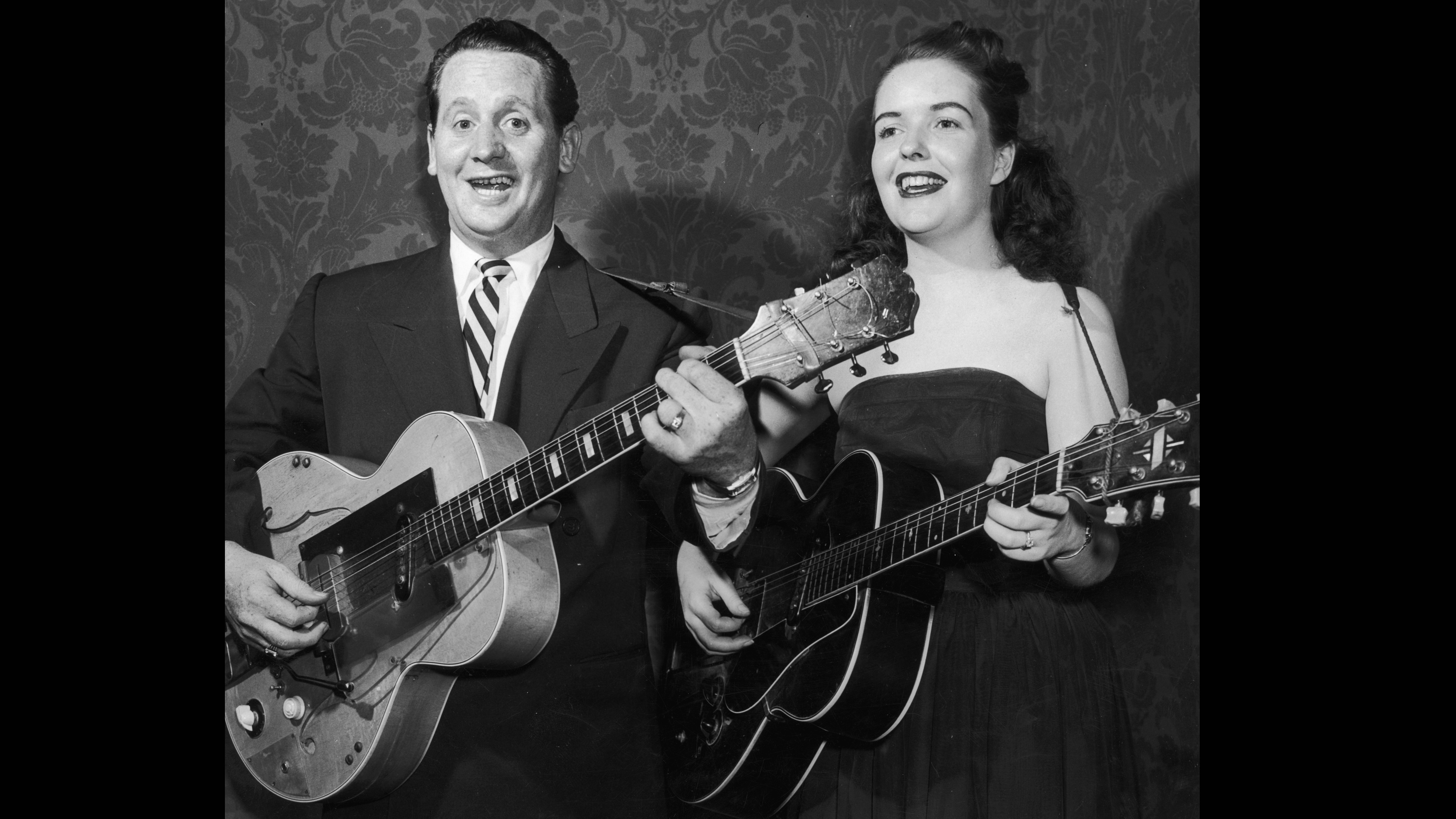
Was it your experiments in recording that encouraged you forward with the solid body guitar?
"No, I was working at a barbecue stand that was halfway between Waukesha and Milwaukee. Today it's the hub of the many cities that come in from all directions. I talked the owner into me building a PA system with my mother and father's radio, and the story was that somebody in the back seat of a car said, 'Red, your voice is fine, your harmonica's fine and your jokes are funny, but the guitar is not loud enough', so I immediately went home and had a problem and it was there I decided, how would I know how to make a solid-body guitar.
"I should retract that – first, solid-body didn't really enter into that. The way it started was that when I took a phonograph pickup and jabbed it into the front of the guitar, I had a guitar that was amplified, but I had a lot of feedback, so I filled it with tablecloths and socks and everything I could think of; in the end I filled it up with plaster of Paris. None of that worked, and I finally destroyed the guitar.
So where did you go from there?
"I decided to pick the most dense material that I could find, and put a string on it, so I found a piece of railroad track that was about two and a half feet long and a piece of wood two and a half feet long. I placed a part of the telephone under the strings, fed it into the radio and I'm running to my mother and saying, I've got it! It was the railroad track – the piece of wood rolled over and died.
"And my mother says,'The day you see a cowboy on a horse playing a railroad track'… she grounded that idea in a hurry, so that went out the window and I said, 'Well then I've got to go to something that's not heavy, but something that's very dense, very sturdy; something that's going to sustain the sound and it's gotta be something that you love when you hold it,' and immediately thought of something like a woman!
"Instead of having an ironing board or a stick of wood with a string on it, it would say something cosmetically as well as musically."
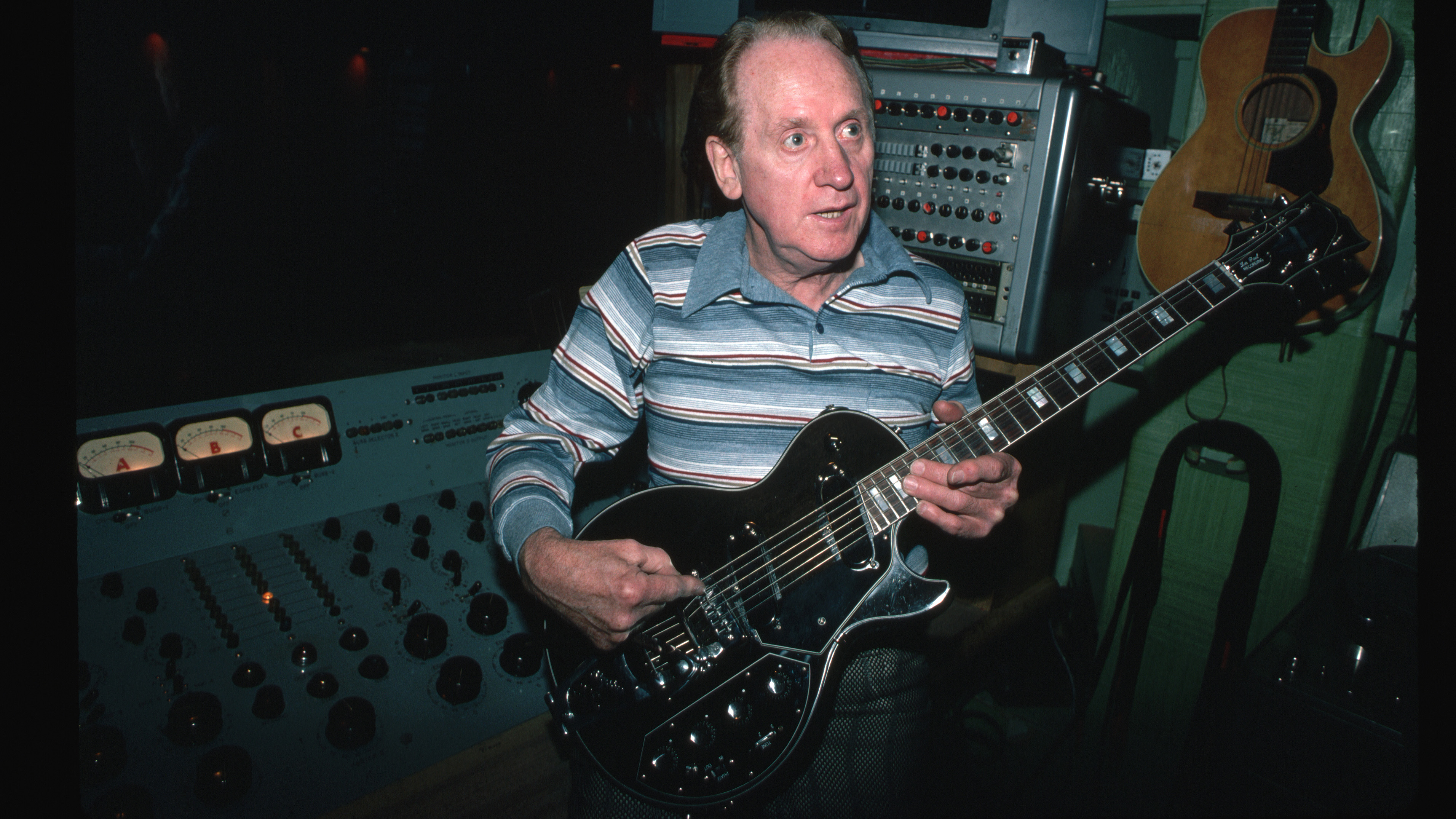
The development of the guitar thereafter is well documented – so jumping forward quite a bit– once the Les Paul guitar finally got to production, how far did that differ from your original vision of what it might be?
"Well it differs from the piece of pine and the railroad track! It went through the 4 x 4 that went through the guitar that was almost a solid-body, with the half-inch top on it [The Log] but every one of them had problems of making two of them that sounded alike, and that would be comfortable to play, smaller.
"Electronically, the improvements there were quick and fast. But it took time to develop this thing because I was also studying to do my music and to have my groups of musicians; my little orchestras and to play with other people, to do all of that… then to end up broadcasting, to make recordings. As I grew older, I had many things to do and less time to do them in."
Thinking about the early 1950s, who did you deal with at Gibson to take the guitar to the form that we now know it?
"I dealt with the second president who was a lawyer and I went from him to the next one to the next one to the next one… I may have gone through at least 11 presidents and 10 years of trying to convince Gibson they should make this solid-body electric guitar. For 10 years, when I wasn't around, they would say, 'The character with the broomstick with pickups on it'…
They made fun of it and didn't take seriously
They made fun of it and didn't take it seriously and it wasn't until 1950/51 until I talked to MH Berlin, Maurice Berlin, and he was chairman of the board and he ran the whole Chicago Musical Instrument company, which included Gibson, and he's the one that I talked to and negotiated with, made the deal with. He was a very honest man and a great person to know and to work with. He was a bit cautious about making such a drastic move, so he had both a regular guitar set up, amplified, and one my guitars and put 'em side by side, then throw a switch so you'd listen to one, then the other. He made sure it had the same strings, using the same pick with the same guy playing it, so he could listen to the difference between the two.
"In the meantime I could be there and explain why that difference was there and the advantages of going to a solid-body over a regular acoustical body. He said, 'This baby is yours, and don't let anybody change your mind!' He gave me full reign to do what I wished to do, and then came in the different presidents of Gibson and there were a lot of 'em. Some of them were not as good as others, some of 'em were just great.
"I can remember one time I just got in the car and drove down, maybe 50 miles to the turnpike and ordered $50,000 worth of equipment for Gibson, then called the president and said, 'I just placed an order for $50,000 of test equipment for you, that you need'. Well he had a fit and he almost died. $50,000?! What's the matter with what we've got?
"I had to explain to him that what we had was archaic and it was way behind the times. To do this right, you should have everything up to snuff; all the test devices, all the stuff to listen on, your amplifiers are all absolutely flat, the best speakers and on and on. To charge the magnets at that time, they were just using cobalt batteries, and they would just zap these pickups. They didn't have a Gauss meter, they didn't even know what they had. I took them from almost nothing, a crude beginning. In fact the fella that was put in charge, his name was Walt Fuller, and Walt was the one they chose to be in charge of the electric guitar and they told him to go rig one up. Then he went over to the library and I went with him and he had always worked with wood and he didn't know anything about electronics, so that whole thing had to start from scratch: from the beginning.
"That was back in the early '30s and by 1950 we had many choices and directions to go in, and whether I could sell them the idea of going to the solid-body electric and make it a beautiful instrument and it happened."

Presumably you were aware of Leo Fender and Paul Bigsby and other people who were following a similar path at that time – did you have any that what you were all doing would become so successful?
"Yes, Leo Fender, Bigsby - I met both of them in my back yard. They came over to listen to people I was recording in Los Angeles. They were over there quite a bit and the reason they were over there was because neither one of them played an instrument, and what they had to do was get the feedback from the player, so they liked to be at the recording studio.
"Well my studio was just my garage in the back yard and it was a perfect place for us to sit and talk and chat for hours about how to make an electric guitar and an amplifier to suit the customer. We would notice things that weren't right; we learned from the player. I, being a musician, knew what was going on. Leo had to depend on what the person told him.
"Now the person playing the guitar or amp, in time times out of 10, doesn't know a thing about electronics and so consequently all they can say is, It sounds tinny, harsh, boomy in the bottom… Crudely, he would be giving the information to Bigsby and to Leo and myself."
Why should I fool around with some guy who is not a musician – I should go to the Gibson people
So was the Fender Les Paul model ever on the cards?
"At that time Leo wanted me to be partners with him - for it to be the Fender guitar: the Les Paul Fender. When he approached me with the idea, he brought over a guitar and he gave it to me and I have it here. And I thought, if I'm gonna do this I'm going to go with the biggest company in the world: Gibson. Why should I fool around with some guy who is not a musician – I should go to the Gibson people.
"I did and the Gibson people turned it down and they continued to turn it down all the way to 1950. Then in 1950, they called me and say, Would you bring that gadget in? Bringing that in there and going through these stringent tests of comparing one against the other, and finally came to conclusion that, Okay it's go, and it's your baby and don't let anybody tell you anything different."
Since then the guitar has gone through many different changes and musical styles – what are your thoughts on how the guitar has been taken up over all these years?
"Well I think it's doing great! It's so enormous now and we're just constantly getting larger and larger. We're number one, but what is interesting, is to progress on. I got a call yesterday and they want me to design two new guitars and four new amplifiers."
Really?
"Yep. That's my next project, so I've got a handful. There are a lot of amplifiers out there and I've seen those amplifiers under all kinds of conditions and so it's a question of whittling them down and the way I'm going to do that is to make the best first, and then make it more economical or with less gingerbread on them."
When you set out with recording, it was all about a clean sound - no distortion, a pure tone…
"That applied back to Leo Fender in my back yard and this was back in 1944/45, at the end of the war. When Leo would come over there he was looking for clean, clean sound; that's what he liked to hear. We agreed that's what we liked to hear, but also I was very aware that it's not was you always want, a clear, clear sound.
"You should be able to add reverb to it, delay, flanging, fuzz – whatever you wish, whatever you can imaging that you want you should have on that instrument. I was going for the very clean sound too. To this moment I want a very clear sound, and then I want to be able to take that very clear sound and warp it or change it to the different sounds of the other player."
I'm not coming out of that garage until I have a sound that's different from anybody else
You developed techniques in terms of phasing, speeding up and slowing down and all that…
"Yeah, it was an exciting time. It happened in Chicago where my mother came down to visit. She said, 'I heard you on the radio last night'. I said, 'I wasn't playing on the radio, I was here playing with The Andrews Sisters.' She says, 'Well you should do something about it, because they're sounding just like you!'
"So I got thinking about it, gave my notice and went to my garage and said, 'I'm not coming out of that garage until I have a sound that's different from anybody else!' It took a couple of years of working on ideas; new sounds, a new way of recording and it turned out to be great. I didn't know it was going to change the world, but I knew it was going to make some noise."
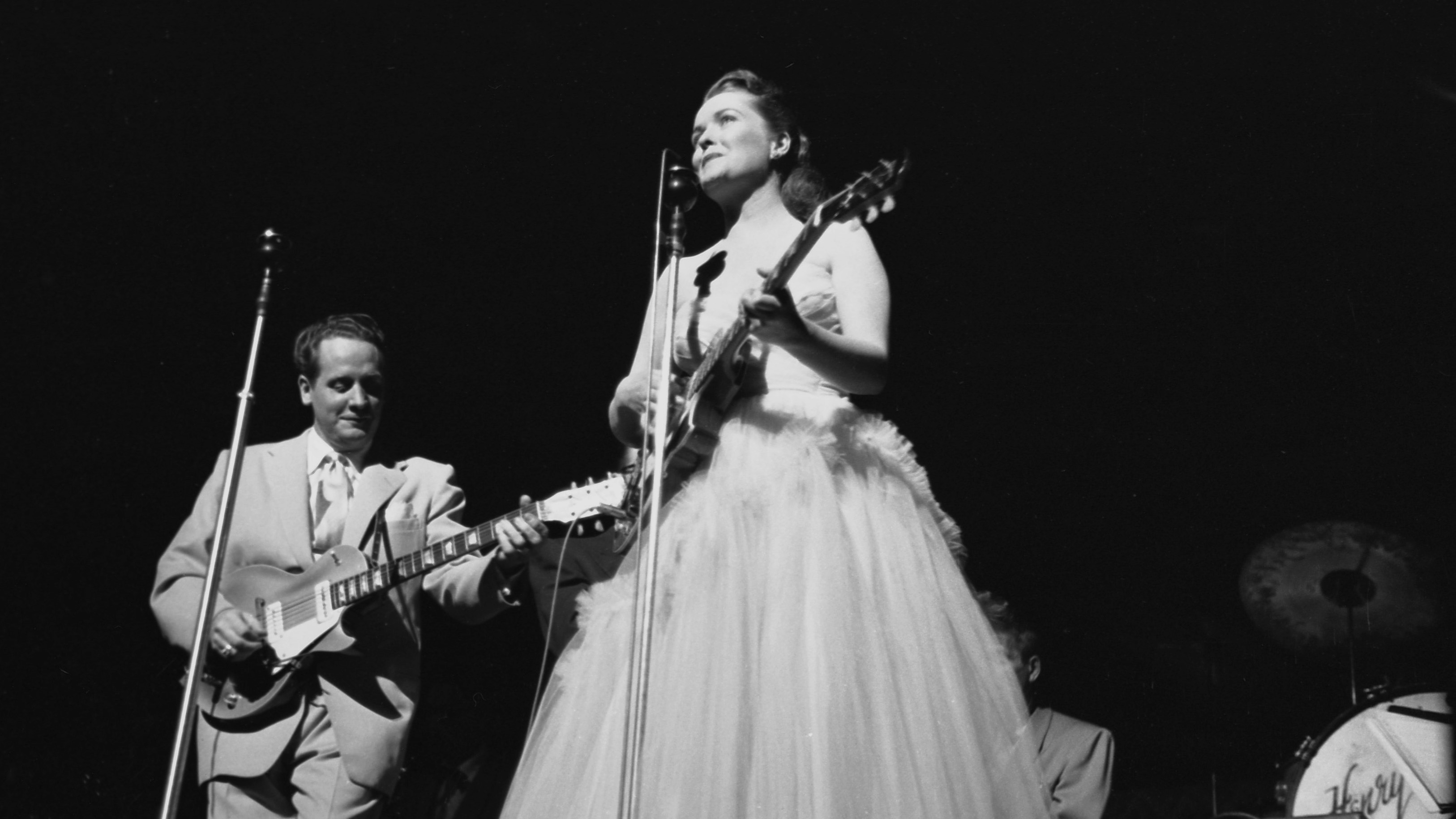
That's not my goal in life; to go down in history as something other than just another guy
How do think the way things are currently, with a lot of musicians looking back to the old times for sounds and styles – do you find that strange?
"I am very aware that so little has happened to the electric guitar from the time that it was conceived to now; where there are so little changes made where there should be drastic changes made. If we were to put our heads together and start thinking about modern technology we would be much more advantaged with the electric guitar than we are. I think that we've been stagnant for many years."
So do you have any ideas that you'd like to see - changes?
"Yeah, but I wouldn't tell ya! Ha ha ha!"
How do you feel when a kid picks up a Les Paul, and he doesn't even know that there's this guy in New York called Les Paul – that it's your name on the headstock?
"That doesn't bother me at all. Whether he thinks Les Paul is a guitar or a person. That's not my goal in life; to go down in history as something other than just another guy."
That might be difficult now, don't you think?
"Well not for me it's not. I remember one time Mary and I landed on the Queen Elizabeth and we were going to play The London Palladium. Many people met us at the ship and they were all talking at us; they were very busy advising us. They're throwing a big party for us and having met us, they quickly came to the conclusion that we would be a total failure if we were to just be regular people; that we had to rise above, like, 'You are a star and at the party you don't just mingle with everybody'.
"They have to look up to you, like you do to one of your people that you worship and who is far above you. So I said, 'I don't think that will work with Mary and I; Mary and I are just the same people and it would be difficult for us to start acting different from normal'. Our normal is to just mingle with people and be just be friends, be nice and have a great time.
If I have to go around telling everyone how great I am, then there's something wrong with my act
"At the party it turned out to be great: exactly the opposite of what they advised us - we couldn't throw a switch and be the Queen of England. Bing Crosby, Charlie Chaplin, Rita Hayworth – they were all in town at the same time, and those people – I have all the newspapers here - they all got torn apart. The press was rough on 'em, and we came out smelling like a rose. Maybe it was just an accident, but it happened that time and we came into London with nothing but great reviews and nothing but nice things to say about us. Not so with Bing Crosby and Bob Hope and Charlie Chaplin and Rita Hayworth. Those guys were out there to get nailed and did. I'll never forget those reviews.
"You can get good advice, you can get bad advice, but my advice is, hey, don't try to act and be something you're not. As far as I'm concerned, I'm just a guitar player and my job is to go out there and play and entertain and do my thing. That's it. If I have to go around telling everyone how great I am, then there's something wrong with my act."
Les, thank you for your time. It's been a great honour talking to you - I hope to get to see you at the Iridium one of these Mondays…
"Hey, you'll love it. Let us know you're there so we can give you the royal treatment. And practice to raise above us!"
Guitarist is the longest established UK guitar magazine, offering gear reviews, artist interviews, techniques lessons and loads more, in print, on tablet and on smartphones
If you love guitars, you'll love Guitarist. Find us in print, on Newsstand for iPad, iPhone and other digital readers
“Every note counts and fits perfectly”: Kirk Hammett names his best Metallica solo – and no, it’s not One or Master Of Puppets
“I can write anything... Just tell me what you want. You want death metal in C? Okay, here it is. A little country and western? Reggae, blues, whatever”: Yngwie Malmsteen on classical epiphanies, modern art and why he embraces the cliff edge











